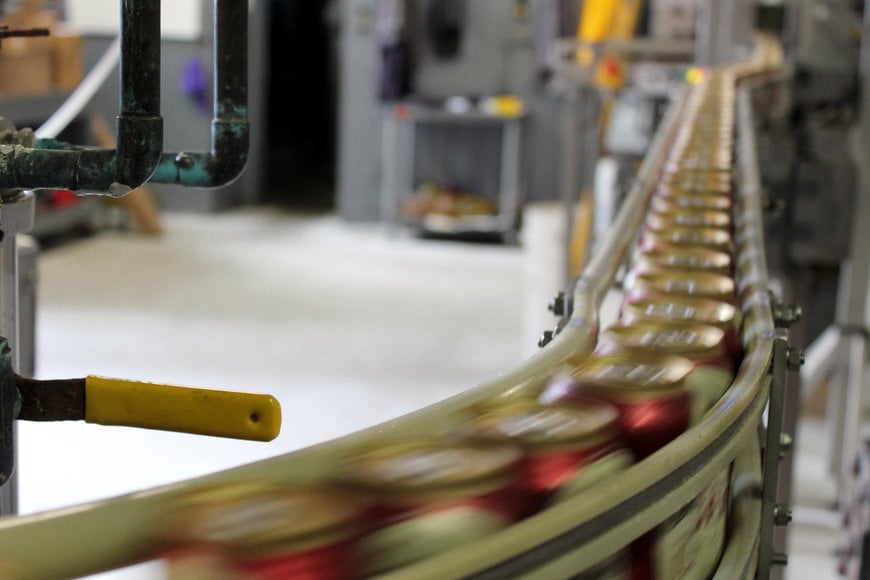www.industry-asia-pacific.com
09
'20
Written on Modified on
Additive Manufacturing: Securing, Certifying and Increasing Uptime of Production Lines
A growing number of companies are implementing additive manufacturing (AM) within their production operations as awareness of the technology’s efficiency-enhancing benefits continues to increase. Moshe Molcho, CEO and Co-Founder at LEO Lane – a company focused on securing AM – takes a look at how, with the appropriate software solutions, brands can ensure secure, repeatable and traceable production while guaranteeing that essential certification requirements are met.

It is widely acknowledged that even the most efficient production lines will, from time to time, experience stoppages. Whether due to a breakdown or malfunction of tooling or a part, it is not unusual for manufacturers to have one or more production lines down at any given time as they wait for replacement parts to arrive.
The good news is that with AM / 3D printing, there are ways to reduce costly downtime, especially, but not solely, when the culprit is tooling.
The cost of an idle line is very high. How high depends on the industry. For food and beverage producers, for example, the cost of downtime can be hundreds of thousands of pounds a day, while in the automotive industry the number is close to £17,000 a minute! per line. That’s more than £1 million per hour! No wonder production managers will go to great lengths to get lines back up and running quickly. In extreme cases, they may fly someone to get a spare part and return with it on an additional purchased seat. The reliability, consistency, and predictability of tools and spare parts is key for avoiding such measures. Not only can AM help, it’s more affordable than an airfare for two.
AM enables manufactures to quickly and cost-effectively 3D print tools on demand at, or near, their production sites. With an inventory of one, it is also possible to make faster switches and still restore with AM. This ensures a production line is only ever down for the shortest time necessary and that a replacement tool is available at any time – something simply not possible with any other manufacturing technology.
As tooling is designed and controlled by the manufacturer, the move to AM is an internal decision. Providing the tools are produced in a consistent manner, this move will reduce the cost of tooling and lower the line’s downtime – a win-win situation. For tools that need replacing often, it’s possible to go a step further and keep one or two 3D printed tools on hand, and when they’re being used, 3D print another.
Bringing downtime to a stop
AM can also help overcome other production line headaches like missing spare parts, which are another major cause of unproductive lines. Unlike tooling, machinery manufacturers own the designs of these parts, and they can offer them as digital assets that can be consistently produced on demand and in limited quantities close to their production line.
Such an approach can significantly reduce downtime. Some hardware manufacturers may go even further. In some cases, AM can produce a replacement part but it is not as robust as a part manufactured in the traditional way. In this case, the equipment manufacturer can offer a 3D printed emergency spare part to keep the line going until the regular part arrives. Like this, two short part replacement efforts can avoid weeks of downtime. The key is to get the line back up quickly without compromising quality. This comes down to consistent, repeatable tools and parts (across time and across production lines).
The good news is there are Software as a Service (SaaS) solutions that can protect such items from being altered, output on the wrong printer or accessed by an unauthorized party. This ensures correct, repeatable, and consistent production of the tool or part, which is a necessary ingredient to the shared goal of manufacturing managers everywhere: a functional line that’s always (or almost always) running!
Certification and AM – part-ners in production
In addition to its ability to help minimize downtime, AM’s inherent flexibility also allows for the manufacturing of different parts and products, sometimes on the same printer bed. This flexibility is perfect for innovative design and solutions but creates a challenge when it comes to certification – something that is a must in many industrial sectors, at various levels.
Typically, within the sphere of conventional manufacturing, normal practice is to certify the production line of the particular part or product made on it. The line is then used only for the certified production of this specific part. In most manufacturing techniques, this is a one-time certification that can last for up to a year and permits the line to produce the certified part during that period. To complete the part’s certification, the material the part is made of is also usually certified as a prerequisite. In conventional manufacturing, certifying the material and the production process can be enough to certify the product. In more exacting certification cases, the workflow and other components (including, potentially, the people handling the workflow) must also be certified.
This kind of certification is sufficient for two main reasons: first, the material entering the process corresponds in a unique way to the material of the final item. That’s to say that, it’s either the same material (as in CNC) or it is a material with predictable properties (as in injection moulding or casting). Second, mass manufacturing lines typically produce the same part continually without interruption. Once the line is certified, you can’t change anything (and typically don’t need to). And, if the line is changed over to a different part, it is re-certified when returning to the specific part.
Changing the game
None of this is true for AM, where the machine settings can and do change from one bed to the next. In addition, it’s often the case that parts being produced will constantly change. It does not make sense to go through a certification process for each bed, nor does it make sense (except in mass manufacturing such as teeth aligner molds) to limit a machine to one part – this robs AM of a big advantage (no switching cost and minimal batch size of one) and increases the cost of said part many times over. Also, changing the machine settings – and even the pre-processing of the item – can change the material characteristics of the actual part produced. This means that certification for AM needs to be rethought with the specific characteristics of the technology in mind.
The good news is that you can certify an AM protocol for a particular part, and with the right kind of SaaS solution you can enforce this protocol throughout the workflow every time the part is produced. This will give you tracking (essentially an audit trail) that will allow you to demonstrate that the part was produced according to the certified protocol with the certified raw material to yield a certified part.
Indeed, for those companies producing more than one kind of part using AM technologies, investigating such software solutions is a necessity in order to track complex production easily and make sure certification is adhered to. There is no doubt that the flexibility and efficiency-enhancing aspect of additive manufacturing will continue to be attractive to manufacturers. Providing the right steps are taken and relevant software solutions are in place to support the integration of this exciting technology, I think it is safe to say it will continue to enhance traditional manufacturing.
*************
Moshe Molcho is CEO and Co-Founder at LEO Lane, an Israel-based business that empowers industrial manufacturers to securely and consistently manage consistent additive manufacturing, anywhere anytime, using the company’s cloud-based SaaS solution. He can be reached at This email address is being protected from spambots. You need JavaScript enabled to view it..

Using AM to produce parts and tooling on demand can help to prevent costly downtime

SaaS solutions enable manufactures to enforce AM protocols throughout the workflow
www.leolane.com

